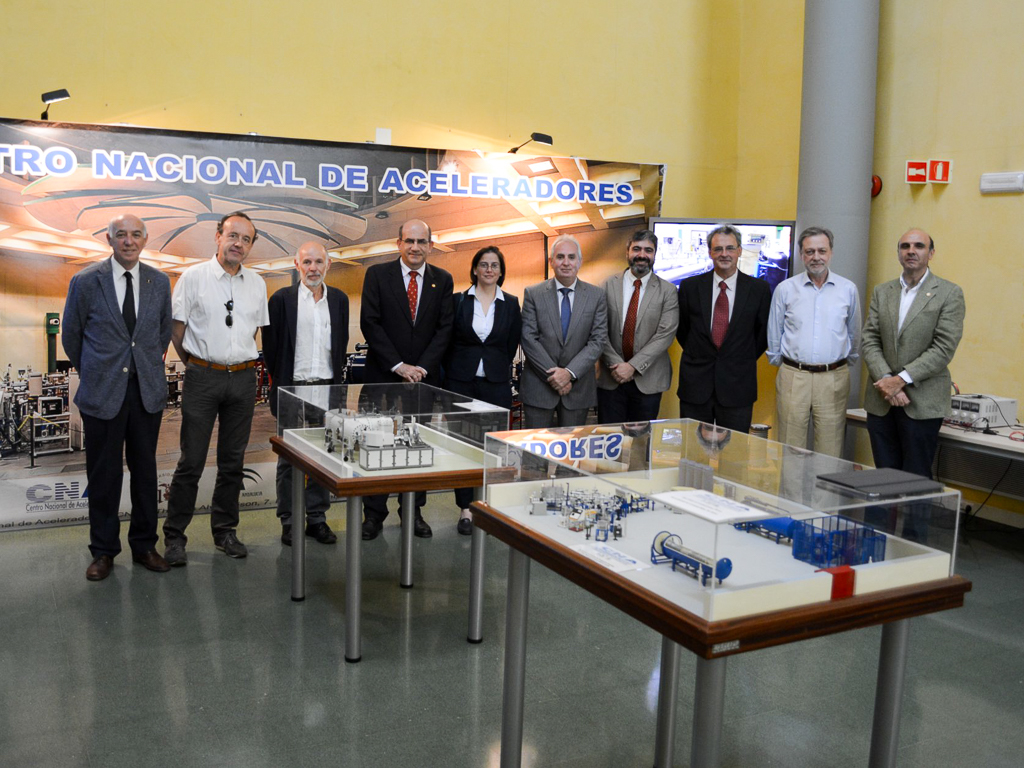Seville, 25 May 2017. This morning the collaboration sessions between the European Council for Nuclear Research (CERN) and the University of Seville (US) took place at the National Accelerator Centre (CNA). Accompanied by the Vice-Rector for Research at the University of Seville, Julián Martínez, representatives of these and other institutions related to CERN research met with the aim of establishing new relations and strengthening existing contacts between them.
The Isla de la Cartuja Scientific Research Centre (cicCartuja), a joint CSIC-US centre, attended this event as a guest. Its director, Miguel Ángel de la Rosa, the director of the Institute of Chemical Research (IIQ), José Manuel García, the director of the Institute of Materials Science of Seville (ICMS), Alfonso Caballero, and researcher Francisco Yubero, also attached to the ICMS, who gave a presentation, attended on its behalf.
The CERN officials are in Seville to visit some of the major scientific facilities owned by the CSIC and the US, including those of the Centre for Research, Technology and Innovation of the University of Seville (CITIUS), those of the Microelectronics Institute of Seville and those of cicCartuja itself, among others.
CERN (Conseil Européen pour la Recherche Nucléaire) is the largest particle physics research laboratory in the world. This centre was awarded the Prince of Asturias Award for Scientific and Technical Research in 2013, together with Peter Higgs and François Englert.
The US and CERN signed a collaboration agreement in 2016 that has allowed the exchange of students, professors and graduates. This alliance has fostered collaboration with other research groups and has contributed to the development of projects of global relevance, a step forward from which centres such as cicCartuja, affiliated with the Hispalense and the CSIC, have also benefited.
At CERN, scientists are working to investigate the structure of the universe. To do this, they use the largest scientific instruments that allow them to study the basic components of matter: the fundamental particles. These are subjected to a process that makes them collide at a speed close to the speed of light. The results give scientists information about the interaction of the particles and provide new knowledge about the fundamental laws of physics.



